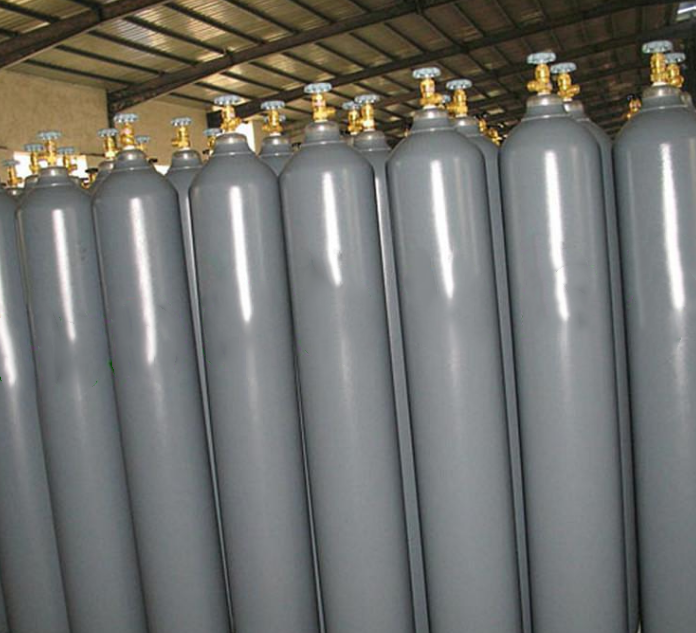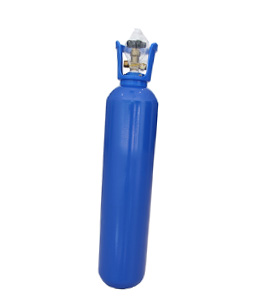
nitrogen gas cylinder supplier, The largest suppliers are China, Germany and Hong Kong, which supply 97%, 1% and 1% helium cylinders respectively. We provide large, medium and small enterprises.
Helium cylinder products are most popular in the Middle East, South America and Eastern Europe. You can ensure product safety by selecting certification suppliers, food packaging, wine making, pneumatic tools, air conditioning and scientific equipment testing and application.
nitrogen gas cylinder price : $20 – $550
How much does a nitrogen cylinder cost?
For expensive gases, it’s far extra common to buy a small, disposable, non-refillable cylinder. A 50-standard-liter “lecture bottle” costs about $180 for the cylinder itself and its transportation. you could have such a cylinder full of nitrogen.


How dangerous is nitrogen gas?
Nitrogen is an inert fuel — which means it would not chemically react with other gases — and it isn’t poisonous. however breathing pure nitrogen is lethal. it is because the gas displaces oxygen within the lungs. Unconsciousness can arise within one or breaths, in line with the U.S. Chemical safety and chance research Board.
nitrogen cylinder sizes
This is our nitrogen gas cylinder sizes and volumes
| Outside diameter(mm) | Water capacity(L) | Height(mm) | Weight(kg) |
| 140 | 4 | 410 | 4.2 |
| 140 | 6.3 | 605 | 5.8 |
| 159 | 10 | 730 | 8.8 |
| 203 | 20 | 900 | 17 |
| 232 | 30 | 1008 | 26 |
| 232 | 40 | 1300 | 32 |
| 250 | 50 | 1500 | 55 |
What is nitrogen?
Nitrogen (N2) makes up the major portion of the earth’s environment, accounting for 78.08% of overall quantity. it’s far a colourless, odourless, tasteless, non-toxic and nearly absolutely inert gas. it can be an asphyxiant in excessive concentrations.
Factory produces nitrogen
Nitrogen is produced in high volumes at air separation plants. A second purification method may be necessary if very excessive purity ranges are required.
Membrane strategies also can be used to recover nitrogen in decrease purities. stress swing adsorption (PSA) strategies are applicable to medium-to-excessive purities.


Three safety inspections of high pressure nitrogen gas cylinders
- shade coding and labels
despite the fact that cylinders are coloration coded, this should not be relied upon to identify the contents. The label affixed to the cylinder must continually be used because the primary manner of contents identity.
Nitrogen bottle coded label
Cylinders without labels or where the label doesn’t in shape the coloration coding must no longer be used. They need to be set aside or quarantined and lower back to the supplier. it’s far vital to refuse recognition on the point of delivery if any cylinders do now not have identification labels attached.
Cylinder regulator check
Having determined the contents of the cylinder, it’s miles then vital to check that the gas is suitable for the software. The strain of the gas in the cylinder ought to not be more than the regulator outfitted, and the cylinder needs to be secured so that it could’t topple over — ideally in a cause-built cylinder rack or shop.
- Cylinder valve
The cylinder valve comes suited to the cylinder whilst it’s far delivered. It is essentially an open or closed valve operated with a key/spanner. The pressure regulator is then fitted to this.
Valve seal
If the valve is on a newly stuffed, nitrogen gas cylinder pressure unused cylinder it should have a manufacturing unit sealing cap in area. tests ought to be accomplished to make certain the correct is undamaged and contaminate free.
Rubber seal warning
it is important that there are not any signs of solvents, oils, greases or PTFE tape, and it must be clear of dust and moisture. be aware that PTFE sealing tape need to in no way be used because the strain regulator has its personal rubber seal. PTFE can cause fireplace/explosions if used with positive gas species.
- Pressure regulator
- Check it has a date stamp or code and is within its inspection period of usually 5 years.
- Check to make sure the identification and rating label is in place along with the manufacturer’s name and or logo and that it is suitable for the gas type.
- Check that it complies with the local standards for pressure regulators and gauges are marked to comply with the appropriate local standards, such as ISO 2503 for regulators and ISO 5171 for pressure gauges and not modified or undergone an unauthorised repair.
- Check for general signs of damage or unauthorised modifications.
- Externally check that the pressure relief valves are undamaged and free from modifications or unauthorised repairs. Internally check that they are free from obstruction.
- Check the cylinder connection to make sure it is free from oils, greases, solvents, debris, PTFE and that it is perpendicular to the regulator body.
- Check to see if the regulator gauges are in place and of the correct type for the gas and scales suitable for the gas pressures. The clear covers should be in place with the needles correctly reading zero, not below the stop bar or bent.
- Check that the pressure rating is suitable for the cylinder pressure. For example – if you have a 230 barg cylinder, then a 230 barg maximum inlet pressure regulator should be okay, right? Maybe not, and here’s why: Cylinders are filled with gas to a set pressure using a reference standard. This is normally indicated on the cylinder label. It will read something similar to “pressure at 20°C”. So, if the 230 barg cylinder filled at 20°C is in an environment where the ambient temperature is approximately 40°C, located in full sun, what would be the pressure in the cylinder be? In this scenario, would a 230 barg maximum inlet pressure regulator be safe to use? Gay-Lussac’s Law applies here: If a gas’s temperature increases, then so does its pressure, if the mass and volume of a gas are held constant. This is exactly the conditions inside the nitrogen cylinder in our example. Therefore, the answer is no, it would not be safe to use because the pressure would most likely be above the 230bar SWP.
- Check to make sure the tightening nut at the inlet and outlet is the correct thread, undamaged and free from modifications or unauthorised repairs.
- Check that the pressure adjustment screw stays fixed to the body and that it moves freely, covering the full adjustment range.
- Externally check to see if the pressure relief valves are undamaged and free from modifications or unauthorised repairs. Internally check that they are free from obstruction.
- Check that the outlet pressure adjustment range is suitable for the application and downstream equipment pressure rating.
- Finally, check that the backs are in place and the pressure relief covers are not out of place due to an over-pressurizing incident.
Where can I buy a tank of pure nitrogen gas?
You can buy it at the gas station near you, we don’t recommend buying one. a lot of answers here speak about commercial gas suppliers, however those usually deal with enterprise and operate in massive quantities.
in case you’re simply an individual who desires to shop for one cylinder, your best wager is to find a retail welding deliver store. Now, assuming you recognize nothing about welding, you might appearance a piece atypical on foot into such a store and asking about their nitrogen prices, but they may be a business and you’re a paying client, so that you probable might not have any troubles.
What are the use of liquid nitrogen and nitrogen?
today, nitrogen is commercially used in a wide range of programs. these consist of: concrete cooling, chemical processing, steel production and fabrication, production, and numerous other miscellaneous packages.
extremely-high purity and extremely-provider Grades of nitrogen are utilized as blanketing marketers in chemical and pharmaceutical processing, and also are usually carried out as service gases in both gas and liquid chromatography.
You may like:
